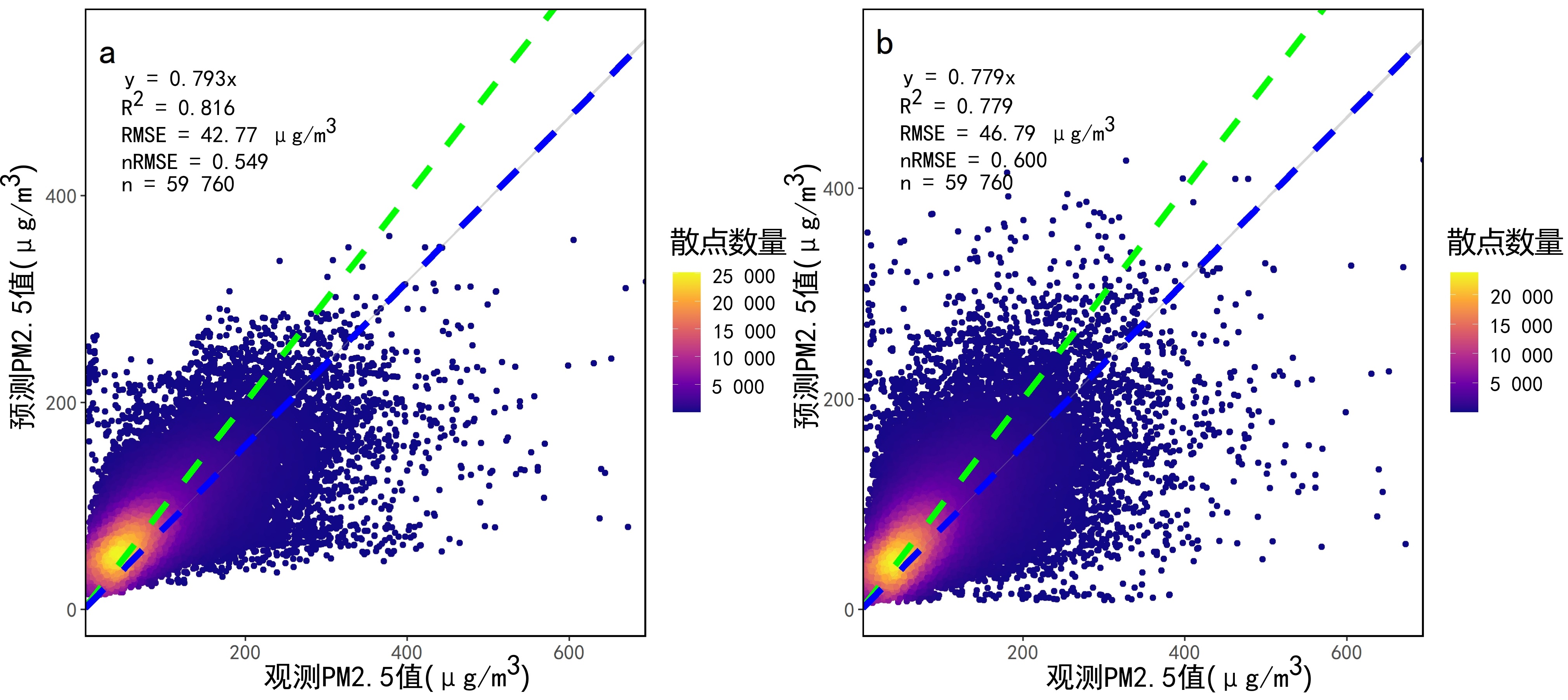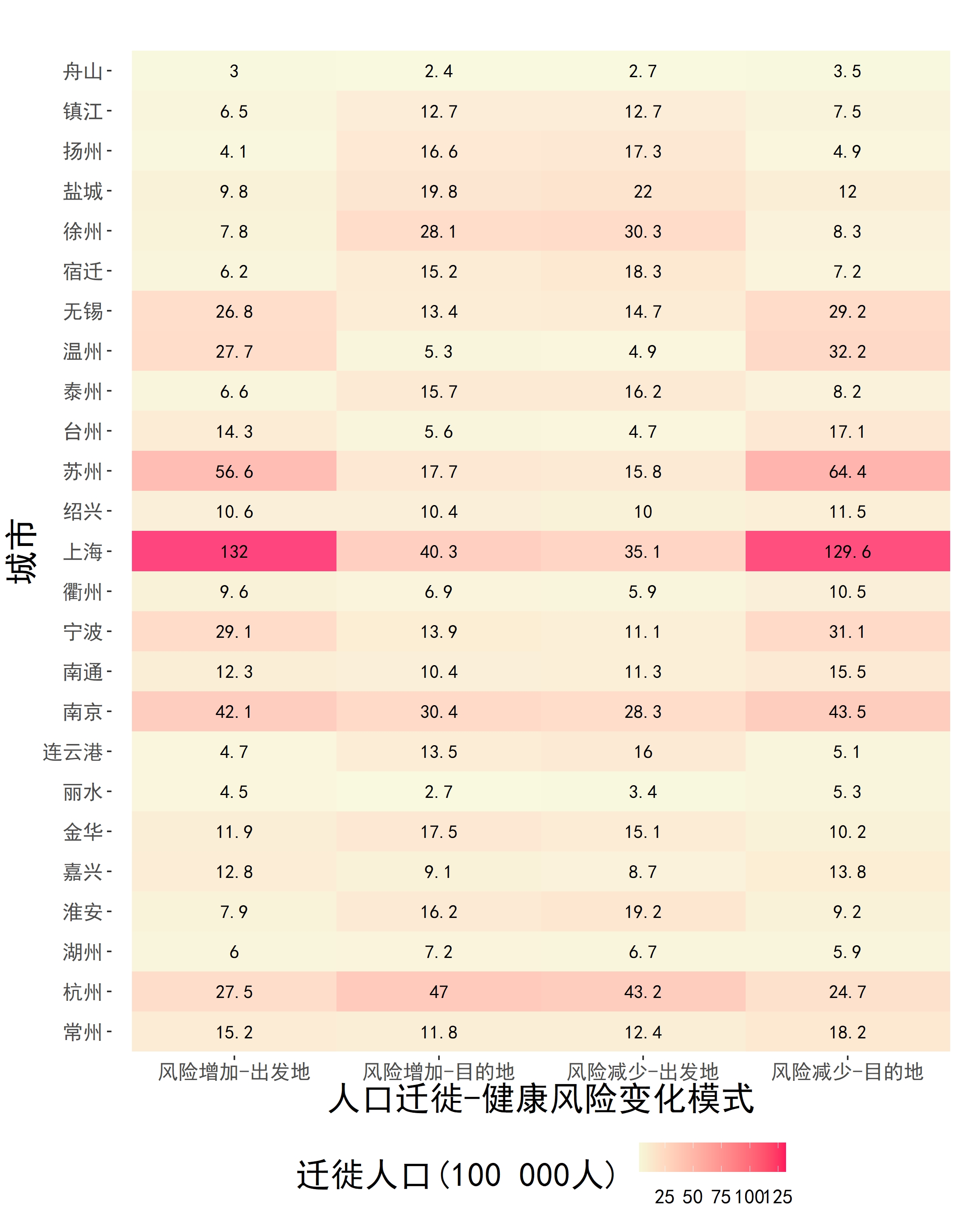The Evaluation of Health Effect of Short-term Exposure to PM2.5 during Spring Festival: A Case Study of 25 Cities in the Yangtze River Delta(Chinese)
Abstract
Human mobility during the Spring Festival is a large-scale annual human mobility across China. This paper evaluated the human health risks of short-term exposure to PM2.5 in the Yangtze River Delta through a combination of the daily-level high spatiotemporal mapping of PM2.5 based on integrated multi-sources spatiotemporal data and machine learning algorithm, and Tencent mobility data based on the theoretical framework of spatial life-course epidemiology. The results showed that, (1) the accuracy of the random forest model for PM2.5 spatiotemporal mapping by spatial cross-validation is more than 0.8. (2) Human mobility behavior enables large-scale mobility across the country in a short period during the Spring Festival, which leads to 60.7 million and 61.75 million populations who have increased and decreased the health risk of short-term exposure to PM2.5 respectively. (3) We should not ignore the health risks of short-term exposure to PM2.5 caused by human mobility behavior during the Spring Festival, because the estimated average increased risks are from 0.25 to 0.39. The highest risk is more than 0.9. (4) This reveals strong spatiotemporal heterogeneity in the health effect of short-term exposure to PM2.5. Even the value of risks could change from 0.84 to -0.75 in two days. (5) Most of the travel populations in the Yangtze River Delta have increased the health risk of short-term exposure to PM2.5 caused by human mobility during the Spring Festival, such as Shanghai and Suzhou, with the exposed populations reaching to nearly 13.2 million and 6 million. This paper provides a practice case study to evaluate the health risk of short-term exposure to PM2.5 and enriches the application of spatial life-course epidemiology.
Research goal
Spatiotemporal change of health risk of short-term exposure to PM2.5 affected by human mobility during Spring Festival.
Results

Figure 1 Comparison between different machine learning models via spatial cross validation

Figure 2 Daily level PM2.5 mapping at 1-km resolution
Table 1 The average value and 95% confidence intervals of AF causing by PM2.5 exposure
| 死亡原因 | $\bar{AF}(+)$(n = 2 858) | $\bar{AF}(-)$(n = 2 914) |
|---|---|---|
| 总死亡 | 0.28(0.21, 0.33) | 0.28(0.21, 0.33) |
| 心血管疾病 | 0.32(0.24, 0.38) | 0.33(0.25, 0.39) |
| 高血压疾病 | 0.40(0.19, 0.53) | 0.41(0.19, 0.54) |
| 冠心病 | 0.34(0.24, 0.41) | 0.35(0.26, 0.42) |
| 中风 | 0.29(0.19, 0.37) | 0.29(0.19, 0.38) |
| 呼吸道疾病 | 0.34(0.23, 0.42) | 0.34(0.24, 0.43) |
| 慢性阻塞性肺疾病 | 0.40(0.29, 0.48) | 0.40(0.29, 0.49) |

Figure 3 The changing mode of human mobility-health risk in 25 cities of the Yangtze River Delta during the Spring Festival

Figure 4 The time variation and OD matrices of AF
Conclusion
We should not ignore the health risks of short-term exposure to PM 2.5 caused by human mobility behavior during the Spring Festival, because the estimated average increased risks are from 0.25 to 0.39. The highest risk is more than 0.9. This reveals strong spatiotemporal heterogeneity in the health effect of short-term exposure to PM 2.5. Even the value of risks could change from 0.84 to-0.75 in two days. Most of the travel populations in the Yangtze River Delta have increased the health risk of short-term exposure to PM 2.5 caused by human mobility during the Spring Festival, such as Shanghai and Suzhou, with the exposed populations reaching to nearly 13.2 million and 6 million.